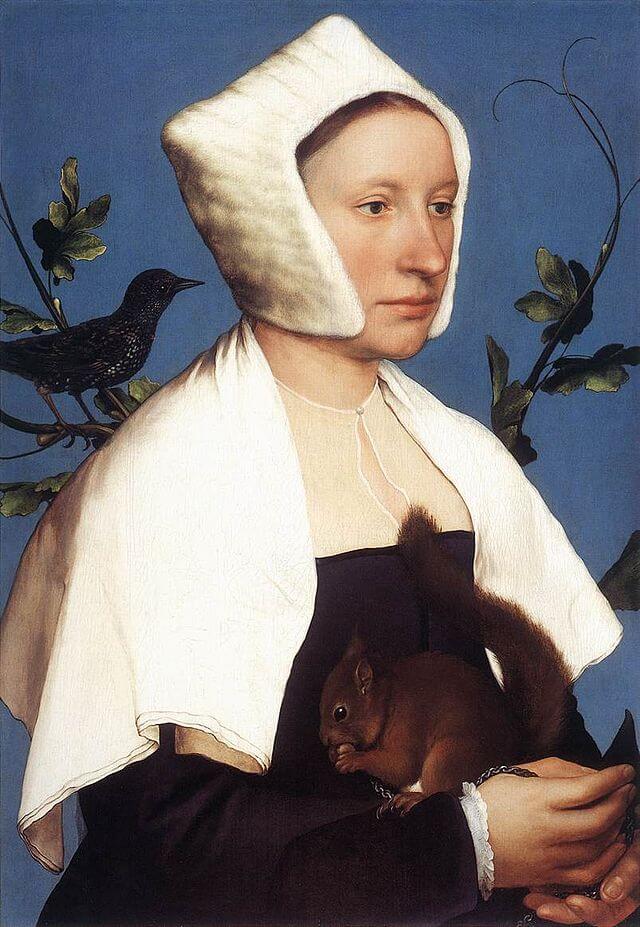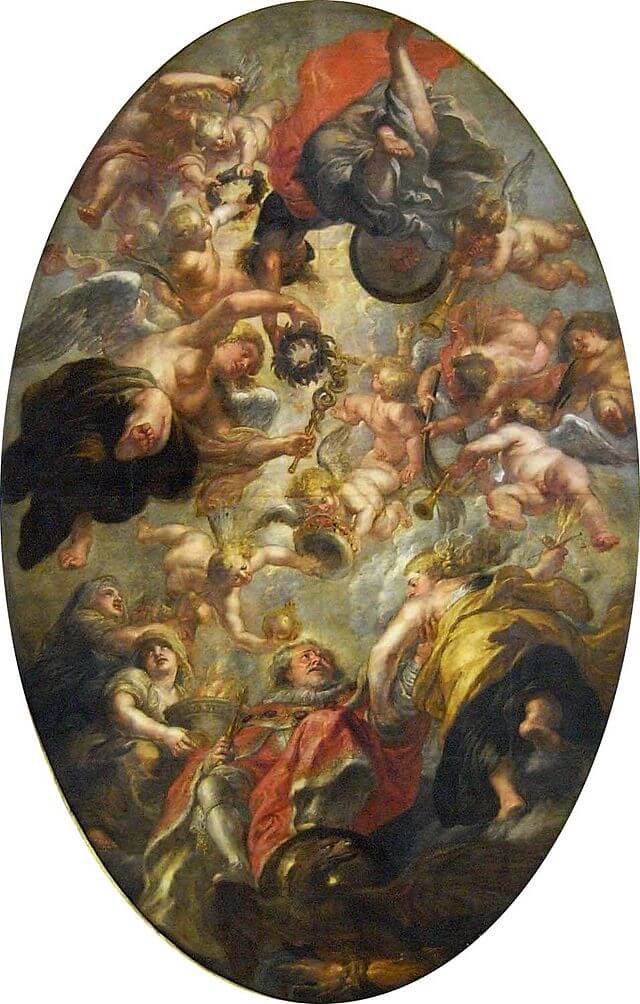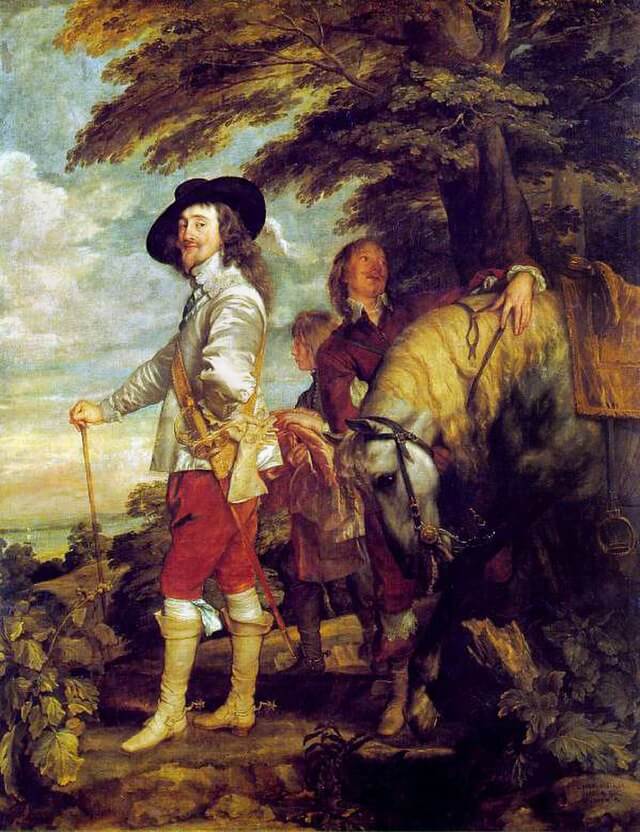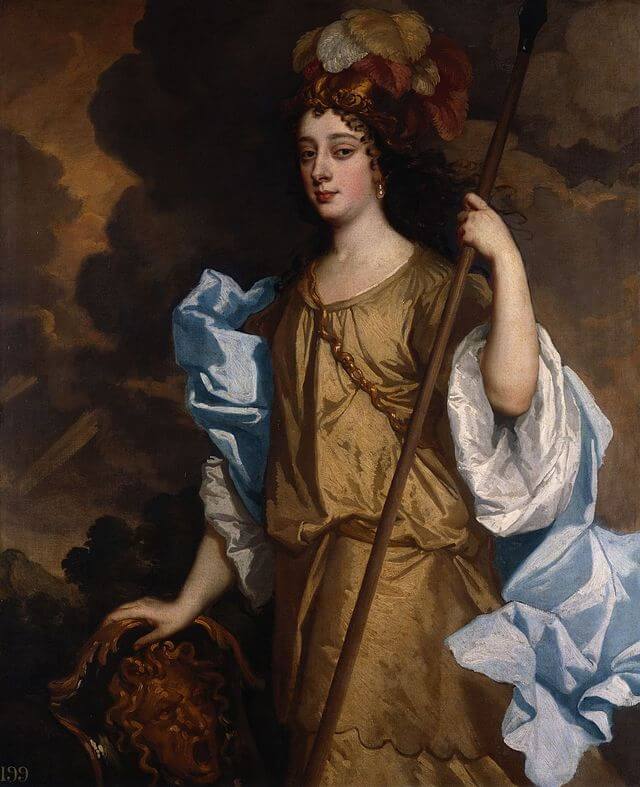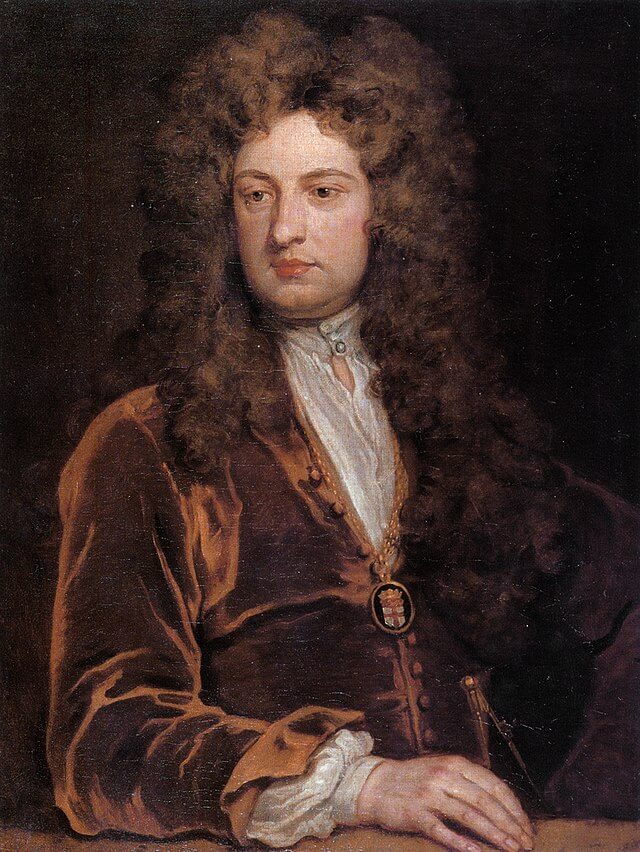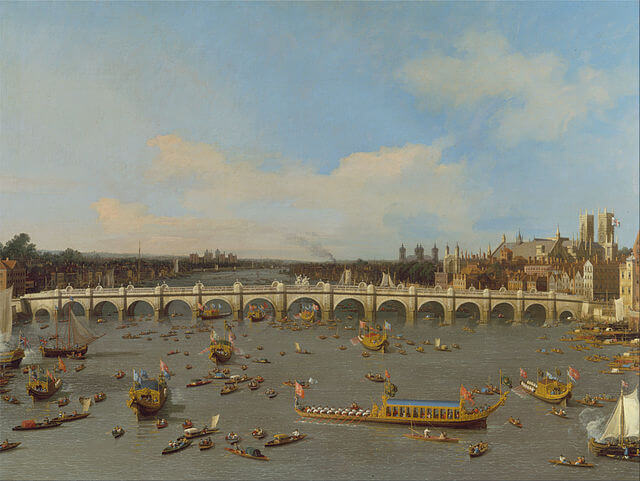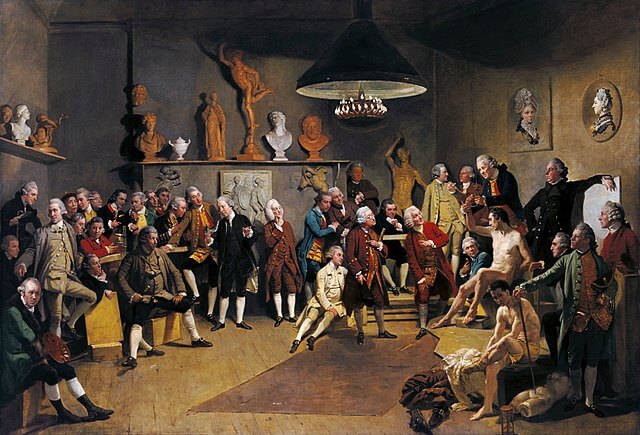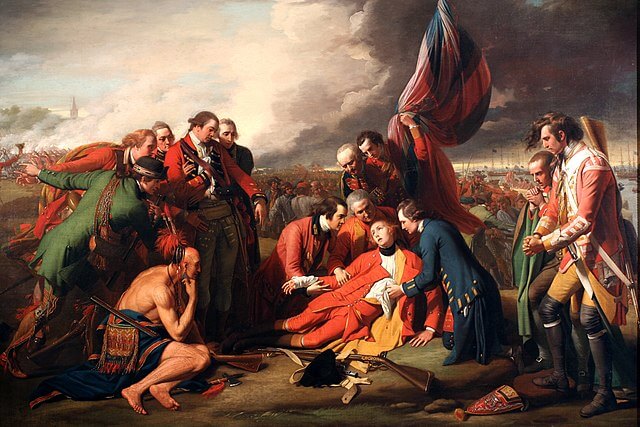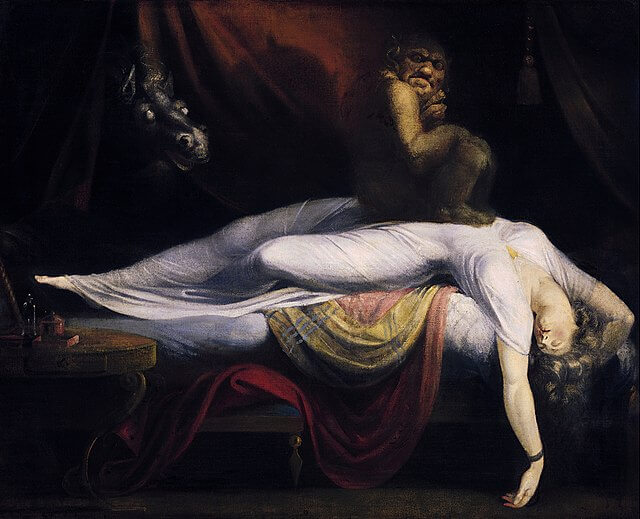These are our favourite top ten foreign old master painters to work in Britain. Dickinson has been fortunate enough to handle works by all of these artists, each of whom left British painting in a better state than in which they found it. This list is not intended to be definitive, rather illustrative of the wealth of foreign talent that Britain has attracted over the centuries. The artists are presented chronologically by date of birth and are illustrated by a work painted either in Britain or under British patronage.
Hans Holbein the Younger
c.1497-1543
A Lady with a Squirrel and a Starling (1526-28), oil on oak. National Gallery, London.
Holbein is regarded by some as the first great painter to have worked in England, foreign or not. Born in what is now Southern Germany, Holbein spent much of his early career working in Basel. On the advice of his friend, the scholar Erasmus, Holbein moved to England in 1526 for two years to seek the patronage of Thomas More and his humanist circle. Portrait of a Lady with a Squirrel and a Starling dates from this early sojourn. The painter would, however, return to England in 1531 for a much longer and impactful stay. It was during this eight-year period that he painted some of his most famous paintings such as those of Henry VIII, Anne Boleyn and the National Gallery’s The Ambassadors.
The British, art historically speaking, are known for their perhaps disproportionate tendency towards portraiture. Holbein almost undoubtedly set this trend in motion; his painstakingly observed likenesses are, for British faces, the first of their kind.
Sir Peter Paul Rubens
1577 – 1640
The Apotheosis of James I (c.1632-34), oil on canvas. Banqueting House, London
A true big hitter in the galaxy of old master painters, Rubens was not only an important painter of his day but also one of the most connected men in Europe as a result of his diplomatic work. Rubens was one of those rare artists who did everything well; he was a master of portrait, religious, historical, allegorical, animal and landscape painting. This monumental work, laid into the ceiling of Inigo Jones’ Banqueting House on Whitehall, was commissioned by Charles I when Rubens was in London acting as Philip IV’s envoy. The canvas represents an allegory of the wise council of the late king, James I and VI, and celebrates his uniting the crowns of England and Scotland. Less than fifteen years after the picture was completed, his son, Charles I, would be executed on a scaffold in front of this very room.
Sir Anthony van Dyck
1599-1641
Charles I at the Hunt (c. 1635), oil on canvas. Louvre Museum, Paris.
If Holbein was the first great foreign portraitist in Britain, then van Dyck was the second. The Flemish painter was born in Antwerp and, at a young age, began working in Peter Paul Rubens’ studio, his early work markedly influenced by the older master. Van Dyck briefly visited London in 1621 but would return in 1632 after a six-year sojourn in Italy. Employed as Charles I’s court painter, van Dyck, like Holbein and Rubens before him, enjoyed royal patronage. His studio was hugely prolific; van Dyck being estimated to have painted forty portraits of Charles and about thirty of his wife, Henrietta Maria. He died young in 1641, just before the English Civil War tore apart the world, and family, with which he was so associated.
Crucially, van Dyck also painted not only the royal family, but also its courtiers and much of the nobility. His portraits were often intimately composed yet powerful and stately. No painter did more to preface the eighteenth-century zenith of British portraiture than van Dyck.
Sir Peter Lely
1680-1680
Barbara Villiers, Duchess of Cleveland as Minerva (c. 1665), oil on canvas. Windsor Castle.
Like his father, Charles I, Charles II was an enthusiastic patron of the arts. Following the bloodshed of the Civil Wars and the austerity of the Commonwealth, the ‘Merry Monarch’s’ reign ignited a revitalisation of painting. Known especially for his sumptuous portraits of Charles II’s court (and especially his mistresses), for many, Lely’s work epitomises Restoration England.
Lely was born in Westphalia and moved to England in his early twenties. He was one of the early adopters of history painting in England. Although not primarily known for his work in this genre, its influence bled into his portraiture, as seen in this likeness of Charles II’s lover, Barbara Villiers, in the guise of Minerva.
Although best known for his post-Restoration career, Lely was evidently a shrewd political maneuverer as he managed to work for Charles I, then Oliver Cromwell, and finally Charles II, all without having to climb the scaffold.
Sir Godfrey Kneller, Bt
1646-1723
Sir John Vanbrugh (c. 1705), oil on canvas. National Portrait Gallery, London.
Despite perhaps not being the most fashionable of artists today, Kneller left an indelible mark on the practice of portrait painting on these shores. The artist hailed from Lübeck, in modern day Germany, and rather incredibly, was reported to have had some instruction from Rembrandt himself, in addition to a longer period of apprenticeship with Rembrandt’s pupil Ferdinand Bol. He moved to London in 1676 and set up a portrait painting practice that quickly attracted royal patronage through Charles II.
Kneller’s real genius was that of running a highly commercial studio; he would work up his portraits from slight facial sketches, with assistants filling in the wigs and drapery. He would also invent a portrait format: the Kit-cat portrait. Named after a series of pictures painted of members of the Kit-cat Club (the above work being one), these pictures all measured 36 x 28 in. and showed the sitter from waist-up, including one hand. It was with these innovations that Kneller bridged the gap between the 17th and 18th centuries. He was the preeminent painter between the ages of Lely and Hogarth and, crucially, fully realised the studio system so relied upon by later painters such as Reynolds. Kneller was so successful that George I would make him a baronet in 1715, a rank unsurpassed by any artist until Sir Frederic Leighton was raised to the peerage in 1896.
Giovanni Antonio Canal (called Canaletto)
1697-1768
Westminster Bridge from the North on Lord Mayor’s Day (1746), oil on canvas. Yale Centre for British Art, New Haven.
Giovanni Antonio Canal is known to all as Canaletto. This 18th century Italian view painter is synonymous with the city he painted most: Venice. Although he was by no means the only successful practitioner of this trade (Michele Marieschi, Bernardo Bellotto and Francesco Guardi all command high prices to this day), Canaletto is the only true household name from this group and one who continues to shape how we imagine Venice today.
Much of Canaletto’s business, however, had a very British source in the form of Joseph Smith, the British Consul in Venice. Consul Smith provided Canaletto with an extensive list of British grand tourists; aristocrats who wanted a souvenir of their time in Venice. However, when, in the 1740s, the War of the Austrian Succession intervened to halt the flow of British travellers, Canaletto moved to London to be nearer his best clients.
Rather predictably, Canaletto focussed much (but by no means all) of his London practice on depictions of the London’s own Grand Canal: the Thames. This work shows the new Westminster Bridge (actually completed some years after this picture was painted) from a fictitious elevated viewpoint. As in his Venetian works, Canaletto evidently delighted in painting the tiniest details of the shipping in this procession of the Lord Mayor of London.
Johann Zoffany, RA
1733-1810
The Academicians of the Royal Academy (1771-2), oil on canvas. Royal Collection.
Zoffany, despite being born in Frankfurt and unlike some artists on this list, is firmly seen as a British painter. That said, he travelled and worked extensively in Europe and India; this perhaps being responsible for his role in revolutionising and revitalising a wide variety of British painting practices. He was an original portrait painter (see his self-portraits for evidence) who quickly became known for his conversation pieces that stuck a far livelier and more innovative note than contemporary practitioners such as Arthur Devis. He was a founding member of the Royal Academy, the first on this list. He marked the RA’s foundation with this monumental group portrait of the assembled Academicians. As seen here, and in famous works such as The Tribuna of the Uffizi and the Indian Colonel Mordaunt’s Cock Match, his group portraits really behave as grand history painting, another genre he championed.
Apparently inexhaustible, Zoffany would also pick up from prototypes left by Hogarth earlier in the century and created his own genre of theatrical portraits of the day’s leading thespians in character, such as David Garrick, a subject he painted often.
Benjamin West, PRA
1738-1820
The Death of General Wolfe (1770), oil on canvas. National Gallery of Canada, Ottawa.
Born in Pennsylvania, Benjamin West was a self-taught painter whose talent was recognised at an early age. After a presiding over a somewhat provincial portraiture practice in Pennsylvania, West undertook a Grand Tour of Italy. In 1763, he stopped in Britain to break his journey back to the American Colonies, but in fact never returned. He very quickly became ingratiated with London luminaries such as Joshua Reynolds, Samuel Johnson and Edmund Burke, and attracted the patronage of George III, one of his best clients.
His connections at court certainly helped secure George III’s seal of approval for the foundation of the Royal Academy in 1768. After Sir Joshua Reynolds’ twenty-four-year premiership, West (incredibly for a foreigner) became the second President of the Royal Academy from 1792-1805 and then again from 1806 until his death in 1820.
As PRA, West, like Reynolds, vigorously promoted history painting with the aim of making it a national style to rival portraiture. Whilst this never truly succeeded, West’s most accomplished pictures were grand narrative paintings of recent and contemporary events, an innovation that redefined history painting, not least because those depicted were shown in modern (and not classical) garb. His most famous work in this vein is undoubtedly The Death of General Wolfe. This picture caused a sensation; when General Wolfe died at the moment of victory at the Battle of Quebec in 1759, he became a national hero, even a martyr. His fame would only be surpassed in 1805 when, under similar circumstances, Lord Nelson would be killed at Trafalgar. It is recorded that Nelson mentioned to West that he much admired his Death of Wolfe and managed to extract a promise from West that, should he die in a like manner, the artist would paint it. After Trafalgar, West obliged and completed The Death of Nelson in 1806.
Henry Fuseli, RA
1741-1825
The Nightmare (1781), oil on canvas. Detroit Institute of Arts.
The Swiss-born Johann Heinrich Füssli started his career as an ordained priest. His clerical career was cut short (at the age of twenty) when he fled Switzerland as a result of his part in exposing a corrupt magistrate. Füssli arrived in England in 1765 and, having taken up drawing, showed his work to Sir Joshua Reynolds who suggested he focus his efforts entirely on art. On Reynolds’ recommendation, he made an extensive trip to Italy between 1770-1778.
The painter returned to England as Henry Fuseli and immediately set about putting his Italian training into practice. Most evident amongst his influences was Michelangelo. Fuseli, not content with treading the more conventional artistic avenues of portraiture or landscape (he never painted one), produced theatrical, historical, mythological and supernatural paintings suffused in Michelangesque terribilita. His debt to Michelangelo extended to the exaggerated physiognomies and muscular torsion he gave his figures.
Fuseli is best known for his ambiguous psychological (and supernatural) picture, The Nightmare. The picture caused a sensation when it was exhibited at the 1789 Royal Academy Summer Exhibition and has had people guessing at its true meaning ever since.
Angelica Kauffman, RA
1741-1807
Design (1778-1780), oil on canvas. Royal Academy of Arts, London.
We round off the list with our second Swiss painter, Angelica Kauffman. Kauffman was a truly European artist; she was born in Switzerland and died in Rome, but is perhaps best remembered for her career in Britain. She crossed the Channel in the early 1760s and, like Fuseli and West, found a mentor and a friend in Joshua Reynolds. Initially, Kauffman’s status in the London art world was uncertain. She was almost ruined by her marriage to the imposter ‘Count Frederick de Horn’, and received ridicule for the rumour that she and Reynolds were perhaps more than simply friends.
Despite all this, she was made an Academician on the establishment of the Royal Academy of Arts in 1768. Along with the still-life painter, Mary Moser, she was the first female full Academician, and remarkably the last, until Dame Laura Knight’s election in 1936.
Kauffman’s art was not to be restricted by her sex; aside from portraiture, she practiced ambitious historical and religious paintings, both genres that were typically seen as the preserve of men. Further to this, she contributed to the RA’s ceiling at Somerset House, four oval canvases depicting allegories of art: Design, Composition, Invention and Colouring. Design, pictured above, shows a female artist in her work clothes, much like Angelica herself. These canvases now adorn the ceiling at the RA’s current home in Burlington House and are the only eighteenth century public ceiling paintings in Britain painted by a woman.



